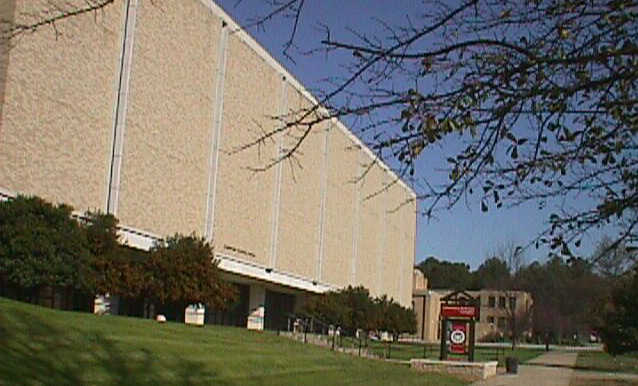
Department of Chemistry
and Physics
 |
Department of Chemistry and Physics |
| CHEM4204 |
Exam 3
|
1. For the reactions given below, determine the type of acid-base theory that best describes the reaction and label the acid and base. (15 points)
a) 2 HClO3 + Mg(OH)2 -------> Mg(ClO3)2 + 2 H2O
theory:________________________
b) BaO + CO2 -------> BaCO3
theory:________________________
c) Cr+6 + 3 e- -------> Cr+3
theory:________________________
d) Fe3+ + 6 NH3 --------> Fe(NH3)63+
theory:________________________
e) HCl + NaNH2 ---------> NH3 + NaCl
theory:________________________
2. Use Pearson's Hard-Soft Acid-Base Theory to tell if the reaction below will occur as written. Explain briefly your answer. (5 points)
2 LiI + CoCl2 -------> 2 LiCl + CoI2
3. Give an example for each of the following isomers: (10 points)
a) coordination -
b) polytopal -
c) linkage -
d) ionization -
e) hydration -
4. Define the chelate effect. Give two examples of chelating ligands, showing how they would chelate to Fe. (10 points)
5. Define ambidentate and give two examples. Using Co, show how the two examples fit your definition of ambidentate. (10 points)
6. In coordination compounds, define inner sphere versus outer sphere. What types of groups would be found in the outer sphere? (10 points)
7. The reaction of Pt(II) with PPh3 yields a 3 coordinate
complex. Which ligand would
you expect to replace the phosphines, iodide or fluoride?
Why? (5 points)
8. Draw the structures of the following compounds: (15 points)
a) potassium cis-tetrachlorodiammineferrate(III)
b) trans-dinitritobis(ethylenediamine)iron(III) sulfate
c) di-m-iodo(tetrachloromolybdenum(V))(h5-cyclopentadienylcarbonyliron(II))
d) mer-tristhiocyanatotriaquacobaltate(II)
e) iodoisothiocyanato(O,S-thiocarbonato)platinate(II)
9. Name the following compounds: (21 points)
a) K2{(µ-Cl)2[(Mo(ONO)4]2}
b) [Ni(en)3]SO4
c) [Cr(O,S-CO2S)(CO)4]
d) [V(h5-C5H5)2Cl2]
e) [Mn(NH3)4(SO4)]
f) [Co(NCS)6]3-
g) [AuCl(PPh3)]